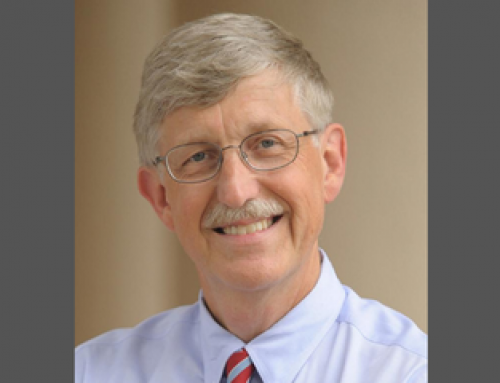We realize we can never place before you all that Carole has accomplished in her life too shortened, but her colleagues, Drs. Susan Redline, Carol Rosen and David Gozal share a synopsis that may serve as inspiration for us all.
On November 19, 2017, the world lost a remarkable physician, scientist, educator, and mentor who critically shaped the discipline of Pediatric Sleep Medicine, establishing best practices for diagnosing and treating infants, children and adolescents with sleep disordered breathing, and who inspired generations of clinicians and investigators, sowing the foundation for future discoveries and innovations.Dr. Carole Marcus’ brilliance, dedication, and generosity touched the lives of thousands of children with sleep disorders and their families as well as innumerable trainees and colleagues who benefited from her unwavering commitment to patient-centered, high quality care, academic rigor, and transdisciplinary science that ensured a central place for children’s health issues.
Her deep commitment to a pediatric-centered approach to sleep medicine significantly influenced the field through numerous high quality research publications; her leadership of major position papers and guidelines on the diagnosis and management of pediatric sleep apnea published by the American Academy of Pediatrics and the American Academy of Sleep Medicine; and her many contributions to educational and research efforts locally, nationally, and internationally. She was an inspiration and role model for clinician-investigators, leaving a legacy of innovation and service that is impossible to fully describe, but is profoundly appreciated.
Dr. Marcus grew up in South Africa and obtained her medical degree at the University of the Witwatersrand. She moved to the U.S. where she pursued her passion for children’s health, initially through pediatric residency training at the State University of New York and then through a fellowship in Pediatric Pulmonology at the Children’s Hospital of Los Angeles where her work with children who had respiratory control disorders stoked her interests in pediatric sleep medicine. During those formative years, her innate intellectual curiosity and keen observational skills, along with her characteristically subdued, self-effacing yet always smiling demeanor that masked a unique blend of grit, creativity, and perseverance singled her out as a clearly emerging star in the program. The countless nights she spent in the sleep laboratory further affirmed her commitment to academic medicine, and consolidated her singular career direction in sleep medicine, a field in which she not only flourished to the highest heights, but also one in which she served as a leading light over the last 25 years.
Dr. Marcus joined the faculty of Johns Hopkins University in 1991, where she served as Director of the Pediatric Pulmonary Fellowship and established their Pediatric Sleep Disorders Center. She rose rapidly through academic ranks, one of the youngest full professors at that institution.
In 2003, she was recruited to the Children’s Hospital of Philadelphia (CHOP), where she served as Director of the Sleep Center, Pediatric Associate Director of Institute of Translational Medicine and Therapeutics and Co-Program Director of the Clinical and Translational Science Award. She held the esteemed R. Anderson Distinguished Chair of Pediatrics.
Dr. Marcus’ many contributions included furthering our understanding of the fundamental pathophysiological mechanisms that predispose children to sleep disordered breathing. She conducted meticulous mechanistic studies that characterized the roles of airway collapsibility, respiratory chemosensitivity, arousal threshold, and sensory integration as key factors that influence sleep apnea susceptibility in children. Her work was notable for identifying pathophysiological mechanisms relevant, and sometimes specific, for pediatric sleep apnea. She was a leader in defining the unique aspects of the disease that required consideration of risk factors, pathophysiology, and diagnostic and treatment approaches that differ from those applicable to adult patients. She also saw a bigger picture that included both behavioral and translational research to advance the field of sleep medicine.
Dr. Marcus recognized the critical importance of randomized controlled studies to generate the highest level of evidence to inform clinical practice regarding the use of sleep apnea treatments. Her vision and passion were key drivers for the launch and success of the seminal Childhood Adenotonsillectomy Trial (CHAT), the first multi-center randomized controlled study of the role of surgery compared to watchful waiting in children with sleep apnea. Working with investigators and clinicians across the U.S., the CHAT study demonstrated the ability of the pediatric sleep community to successfully collaborate on a very challenging study and to establish a model for addressing complex issues of equipoise and implementing rigorous data collection in young children. The study’s primary findings, published in the New England Journal of Medicine, provided pivotal data on the beneficial effects of surgery on children’s quality of life, sleepiness, behavioral and polysomnographic findings. Dr. Marcus not only led this paper but played a leadership role in over a dozen other papers from this study that provided new data on a wide range of clinically relevant study outcomes, such as the impact of treatment on children’s growth and cardiometabolic health.
One question that was not answered by CHAT was the role of surgery in children with snoring without frank sleep apnea. Recognizing that approximately 50% of children referred for adenotonsillectomy fit this diagnostic category in which data on treatment are unavailable, Dr. Marcus helped to spearhead the NIH-funded Pediatric Adenotonsillectomy Trial for Snoring (PATS). In addition to addressing a high impact question relevant to millions of children, this ongoing study also specifically investigates the bases for differences in treatment responses among children from disadvantaged neighborhoods and children with asthma or obesity. Carole’s passion, clinical expertise, and her leadership—which was both rigorous and collaborative- was key for the successful launch of this study. Her many PATS collaborators will dearly miss her leadership and friendship, but are committed to ensuring that the study successfully concludes and generates the high quality evidence that Carole sought and would be proud of.
Dr. Marcus was also a master clinician, revered by her patients, who provided expert care to children with highly complex and challenging problems, making sure they always got what they needed. She also directed a world-renown clinical sleep program that was a model for its comprehensiveness, child-centeredness, and evidence-based model for interdisciplinary pediatric sleep medicine.
A “hands-on” approach, pushing the envelope and thinking outside the box were other characteristics that helped define Carole Marcus. Early in her career, some of the contraptions and devices she engineered to facilitate diagnostic and treatment solutions for her patients or to address complex physiological questions, were clearly Carole’s signature trademark. Remarkably, these inventions were used by many subsequent generations of fellows who referred to such devices as Carole’s Box, or Carole’s Test, further attesting to the long-term impact of her contributions. She engaged multi-disciplinary teams to identify novel solutions for supporting ventilator and CPAP use in patients, including behavioral interventions that were child- and family-friendly (including buying trophies for children who used their CPAP). Dr. Marcus was actively investigating the role of adjuvant interventions, such as anti-inflammatory medications, in treatment of pediatric sleep disordered breathing. She also participated in emerging research aimed to identify improved ways for measuring sleep disordered breathing and its impact on children’s well-being. For example, she provided expert input into the development of the pediatric PROMIS sleep measurement instruments and examined different methodological approaches for studying pediatric sleep in the home environment.
Throughout her career, Dr. Marcus played numerous leadership positions, serving on key committees and task forces of the National Institutes of Health, Sleep Research Society, American Academy of Pediatrics, and American Academy of Sleep Medicine. She served as a Deputy Editor for Sleep from 2006 to 2016. In these activities, she worked tirelessly to ensure that the Pediatric Sleep Medicine field was appropriately represented, advocated for support of new investigators and pediatric-focused training, and ensured that research protocols and published papers and guidelines were rigorous and appropriate for pediatrics. She was the recipient of numerous recognitions, including the William C Dement Academic Achievement Award from the American Academy of Sleep Medicine, and Annenberg Award for her contribution to Sleep Apnea and Sudden Infant Death Syndrome, as well as was consistently identified in Philadelphia’s “Top Doctors.”
Carole was a dedicated and skilled mentor who attracted some of the “best and brightest” to the field of sleep medicine and worked tirelessly and generously to help launch and sustain the careers of innumerable people, both here in the US and abroad, including a number of international scholars who traveled to the US to hone their research skills with her. Her impact was far reaching and helped to populate world-wide pediatric sleep centers with sleep clinicians who learned from and were inspired by Carole. She also advocated for the most rigorous training in pediatric sleep medicine, articulating a vision of a track-specific approach which provided a highly concentrated and intense pediatric sleep experience for sleep medicine fellows with pediatric backgrounds.
In addition to her many professional accomplishments, Carole was a compassionate, highly ethical and wonderful human being. She cared deeply about vulnerable populations and social inequities, and her life work reflected these values. She never forgot her home country of South Africa where she generously supported scholarships for the local children there, including at her medical school. Her research and clinical care was exquisitely sensitive to issues related to social disadvantage, and she sought to overcome barriers in health associated with discrimination and access to care.
Carole was also fiercely loyal to her staff, colleagues and mentees, showing a level of commitment that engendered trust and the best of teamwork, while also encouraging people to take chances and stretch into new areas. Her leadership style was inclusive, insuring the voices of others were heard and opinions were valued. She held everyone up to the highest ethical and work standards, but did so in a way that encouraged each person to find where they excelled and to be “their best self”. Her level of energy was boundless, as was her commitment to numerous programs and people. She brought people together at work, socially outside of work, and organized get-togethers for former and current colleagues at far away meetings. She sensitively accommodated different work and lifestyles of her diverse team. When staff members struggled with complex health issues, she would help them find that needed care. Her staff and colleagues at CHOP considered her to “be everything to everybody.”
Carole was someone who also appreciated all that life had to offer. She was dedicated to her family and friends. She was a fun-loving and adventurous world traveler, who savored the diverse beauty of different landscapes and cultures. She loved meeting new people and appreciated a wide variety of musical and visual arts as well as the small joys of daily life, books, arts and crafts, and healthy living. She valued all of life’s gifts and gave generously in return. As her father noted, Carole lived every day to “learn, enjoy and give.”
Beauty comes from a life well lived. As we honor her work, her accomplishments, her joy in life, and all she represented, we will remember forever the beauty she has so selflessly given to all of us, and are grateful for her enduring impact on the field of sleep medicine.






